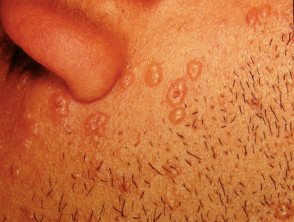
Chickenpox
What is chickenpox?
Chickenpox is a highly contagious infectious disease caused by the varicella-zoster virus. It is characterized by an itchy skin rash consisting of red spots and fluid-filled blisters. While it's more common in children, adults can also get chickenpox. Once a person has had chickenpox, the virus remains dormant in their nervous system and can reactivate later in life, leading to shingles.
What causes chickenpox?
Chickenpox is caused by the varicella-zoster virus. It spreads easily primarily through respiratory droplets from an infected person's cough or sneeze. It can also spread by touching or breathing in the virus particles that come from chickenpox blisters.
What are the symptoms of chickenpox?
Chickenpox symptoms usually appear 10 to 21 days after exposure to the virus. They include:
Fever and fatigue
Loss of appetite
Headache
Itchy rash that turns into fluid-filled blisters and then scabs
Red spots appearing on the face, chest, and back, which spread to other parts of the body
How do I treat chickenpox?
While there's no cure for chickenpox, the disease can be managed with:
Antiviral medications, especially in severe cases or for those at risk
Calamine lotion and oatmeal baths to relieve itching
Over-the-counter pain relievers like acetaminophen or ibuprofen (Note: Aspirin should be avoided in children with chickenpox due to the risk of Reye's syndrome)
Keeping nails short to prevent skin infections caused by scratching
How do I prevent chickenpox?
The best prevention for chickenpox is the varicella vaccine, which is typically given in two doses: once between the ages of 12 and 15 months and again between 4 and 6 years. Additionally:
Avoid close contact with those infected
Maintain good hand hygiene
Quarantine infected individuals until all blisters have formed scabs
Chickenpox presenting as vesicles with surrounding erythema.
Credit: DermNet NZ
An acute vesicle of chickenpox where the surrounding skin is still inflamed and red.
Credit: DermNet NZ



